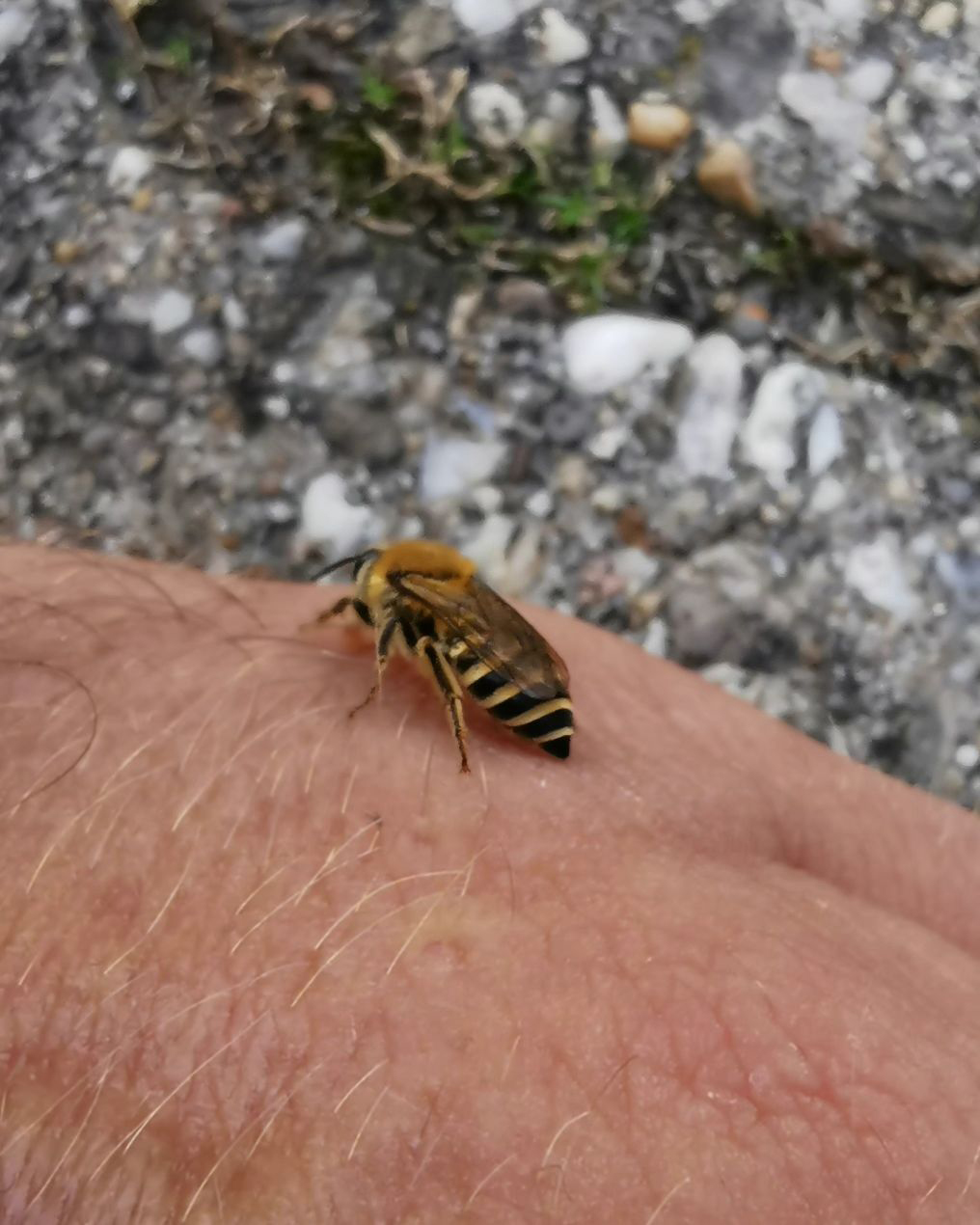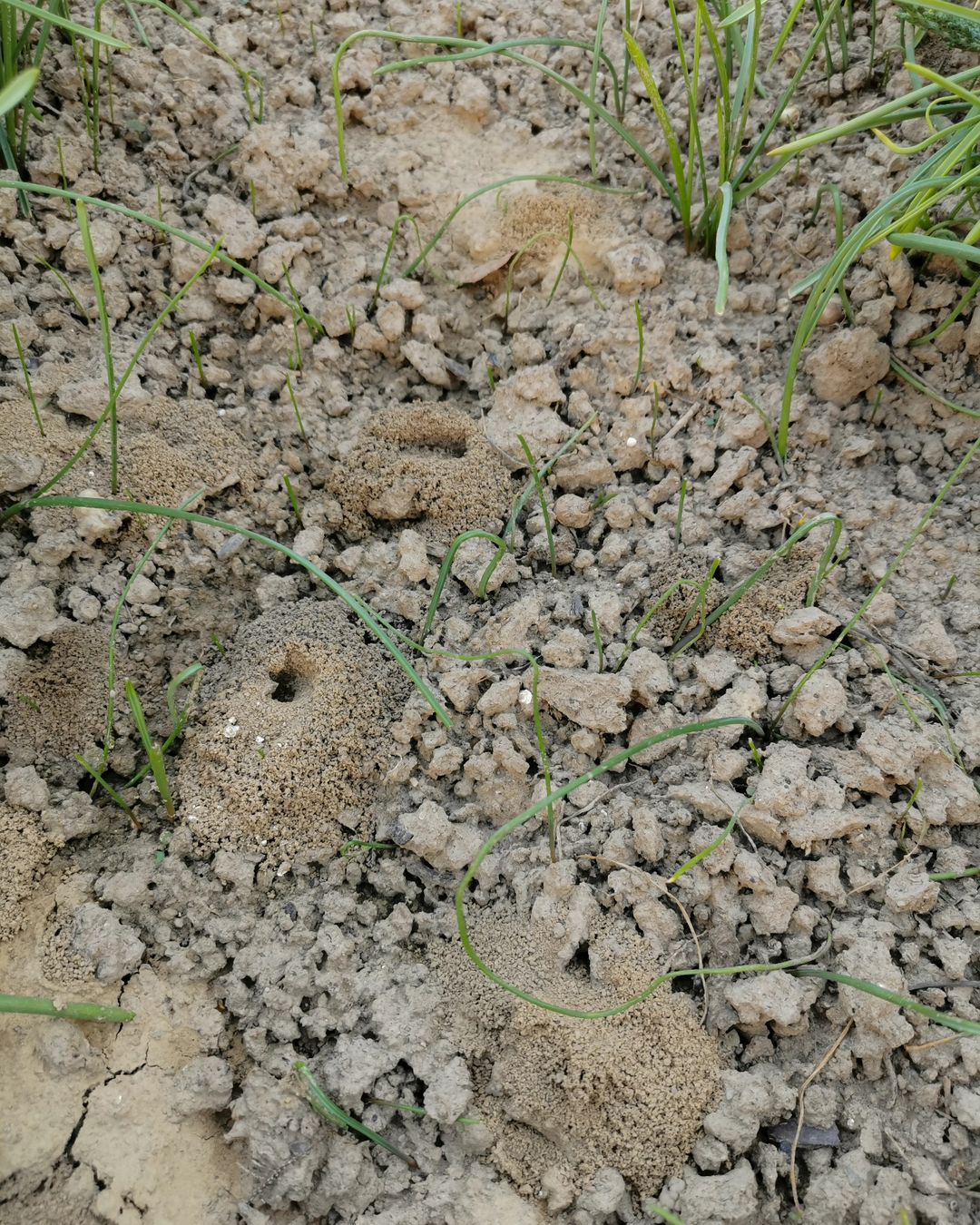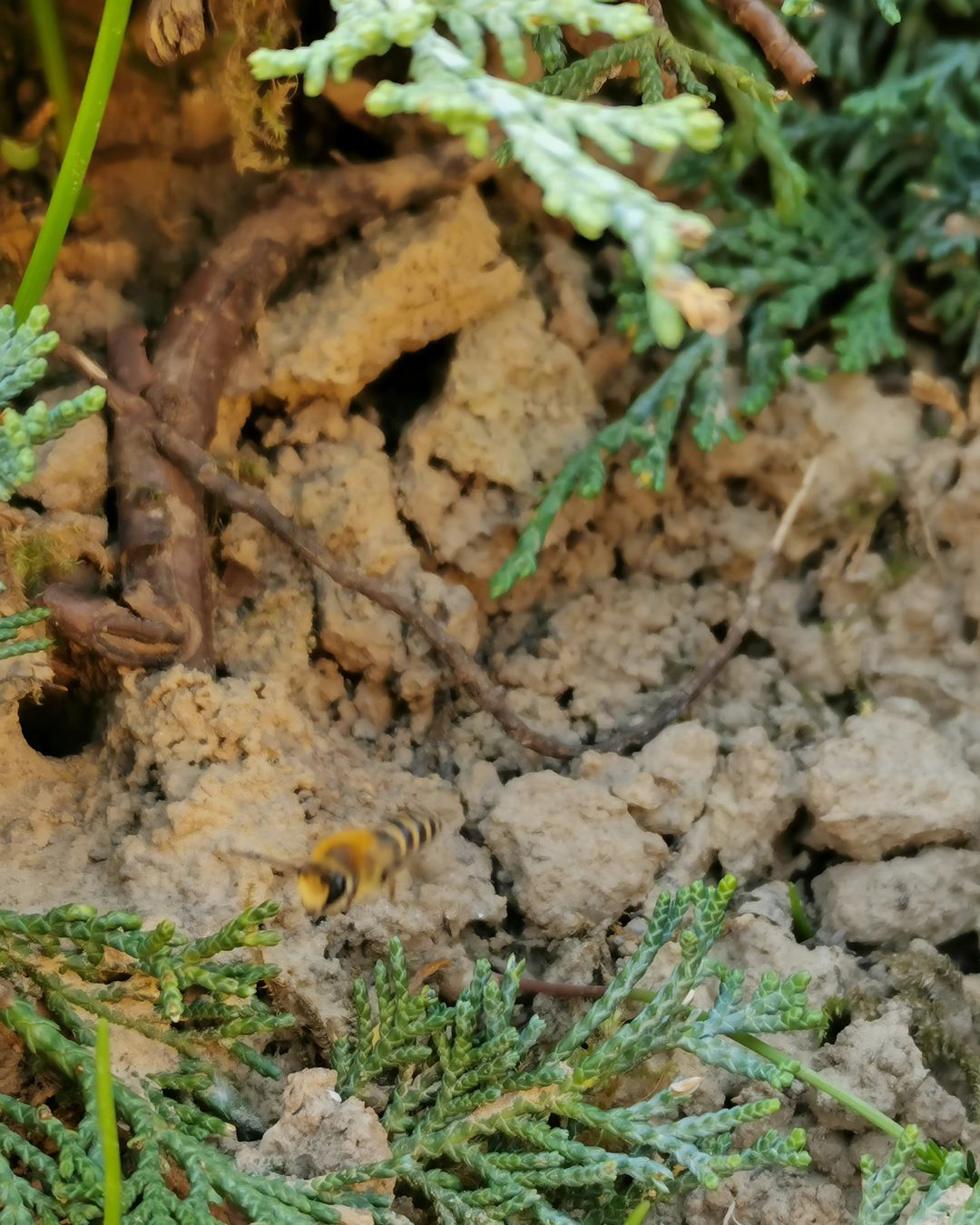Post #744:





The ivy bees (Colletes hederae) are one of the 15 species of plasterer bees native to Germany.
🌿🐝🎶🌞
Their nests are lined with a cellophane-like plastic using secretions from two glands at the end of the abdomen and on the labium ("lower lip"). That's why they are also called polyester bees. In Germany we call them silk bees "Seidenbienen".
🌱🎶🐝🕳️ 🐝🕳️ 🐝🕳️🎶🌱🌞
They live solitary in colonies, in sunny locations with no or sparse vegetation, where they dig their holes. Each species of plasterer bees specializes in the pollen of a particular plant, as does the ivy bee.
🗺️🐝🌐🐝📈
The distribution area of the ivy bees in Germany is concentrated in the Upper Rhine Plain and the Middle Rhine (where these photos were taken) as well as the Moselle Valley. However, since 2006 there has been a major wave of spread. The bees have also developed a novel preference for kindergarten sandboxes.
✨🐝💕
They are peaceful animals who were not disturbed at all by my presence. The females have a very weak stinger, which they only use in extreme danger. There are no known allergic reactions.
🐝🐝🐝
Topic: ➟ Insects
🤗 For a more nuanced discussion, please feel free to use the comments section, private messages or the anonymous contact form on my website.
Details:
This post is part of the artistic performance The Happening on Instagram.
Further information about this art project Related post on InstagramCreator of this post is Frederic Hilpert
© File Usage Guidelines This post on megagroundsloth.de#biene #plastererbee #wildbiene #seidenbiene #biología #bienchen #abejas #bee #entomology #invertebrates #colletes #natur #wildbee #naturgenießen #abeja #naturephotography #bienen #bienenschutz #🐝 #wildbees #bees #insektenfotografie #insekten #naturaleza #natureaddict #wildbienen #insecto #naturfreunde










